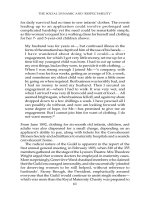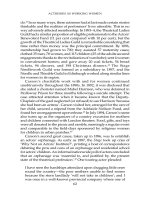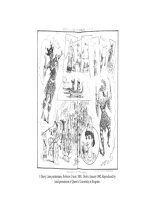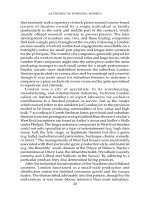ACTRESSES AS WORKING WOMEN 183
Bạn đang xem bản rút gọn của tài liệu. Xem và tải ngay bản đầy đủ của tài liệu tại đây (25.64 KB, 1 trang )
ACTRESSES AS WORKING WOMEN
and Crown public houses in Wapping were denied, despite the fact
that neither the police nor the vestry ever lodged complaints against
the premises or their proprietors. Reviewing the case, the LCC accepted
the comments of its Inspector as equally indicative of both houses:
I am of the opinion that not only is prostitution tolerated, but that
it is even fostered by the management, at all events in the person
of the elderly woman behind the bar [wife of the proprietor]…. I
can find no other name for such a place than a hell.40
The women, he alleged, were all common prostitutes, the men were all
foreign sailors, and the combination had an inevitable result. Evidence
both from the LCC hearings and resultant litigation strongly suggests
that the authorities took advantage of the proprietors’ low status as
East End immigrants in order to financially cripple these popular centres
of audience-generated entertainment, and that this was undertaken at
the request of evangelists active in the neighbourhood.41 Other local
residents testified that the Rose and Crown was well-conducted, there
was no drunkenness, and that working-class people of both sexes were
as liable to attend as sailors and prostitutes,42 yet neither the Rose and
Crown nor the Angel and Crown were ever re-licensed for music or
dancing.
Through a combination of economic buy-outs, political pressure,
and partisan officials, the moralists were successful in suppressing and
controlling working-class entertainment in Whitechapel and Wapping.
Buoyed by these victories, the middle-class reformers once again turned
attention to their own institutions. The new campaign was ambitious:
they deliberately targeted the halls that had particularly high local and
international profiles, and particularly prestigious clienteles. Vindicated
by small successes in the East End, the National Vigilance Association
and Laura Ormiston Chant (founding editor of its paper the Vigilance
Record) led a crusade by the middle class upon the middle class.
It is clear from the testimony before the LCC in 1894 that Chant
recognized that the threat of promenades not only lay in the coincidence
of liquor and prostitutes, but also in simultaneous viewing of the scantilydressed female stage performers and the gorgeously outfitted
prostitutes. It is probably no coincidence that members of the National
Vigilance Association pinpointed this as a problem at this phase of the
campaign, for in 1891 the Association subsumed the Society for the
Suppression of Vice,43 an organization that had busied itself seizing
‘obscene’ material since 1834.44 The knowledge required to carry on the
154









